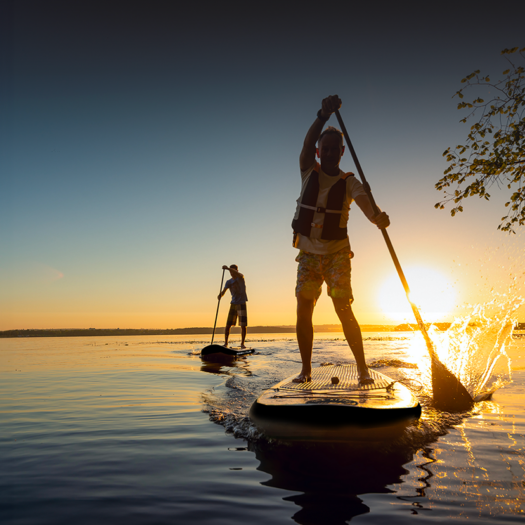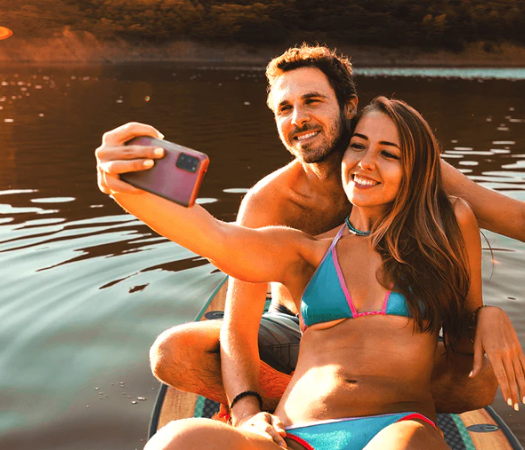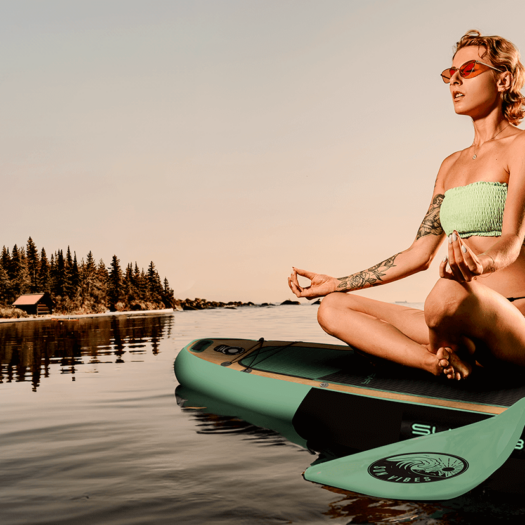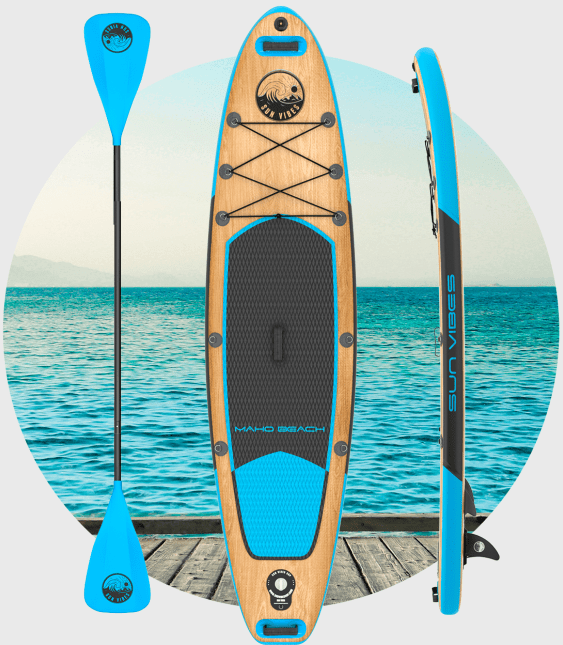Whether you’re just beginning or have been paddleboarding for years and want to get your dream SUP, we have the tips you need to help you make the right choice according to your preferred activity.
For a quick cruise on calm water

It doesn’t matter if your board is rigid or inflatable for this kind of activity. The important thing is that it is wide enough (30 to 32 inches) and medium long (10 to 12 feet) to ensure stability. Obviously, opting for an inflatable board will make your life much easier when it comes to storage, transportation and maintenance.
If you’re a beginner, using your board in stable waters will definitely get you started on the right foot. For safety reasons, group rides are highly recommended. Going solo can be a lot of fun for those who like to cut themselves off from the outside world, but it’s always safer to opt for two-person or group excursions.
For long distance trips

If you’re going on a longer SUP ride, a longer board (12 to 13 feet) will have better aerodynamics and propel you further. Plus, to make your breaks more comfortable, all SUN VIBES SUP boards come with a free kayak bench so you can catch your breath and enjoy the view.
Also, don’t forget to bring a waterproof backpack to protect your belongings.
For a yoga session on the water
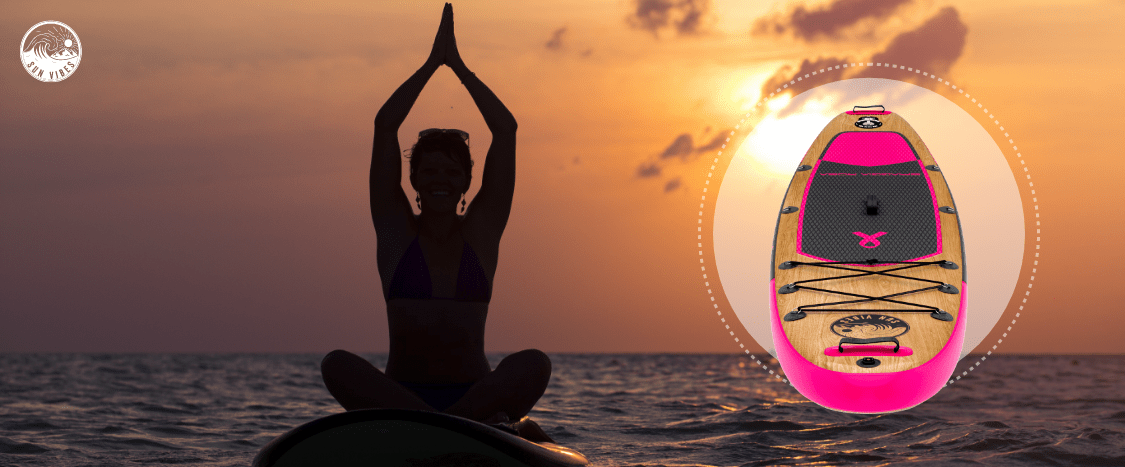
Aqua yogis should choose an inflatable paddle board with a comfortable, stable surface. To perform every pose with complete peace of mind, opt for a wider board, around 36 inches. Just make sure you choose calmer waters so you can fully immerse yourself in your yoga session without getting derailed by the waves.
For a sea or ocean getaway

If your dream is to hit the Atlantic or Pacific coast and ride the waves, we recommend shorter boards (8 to 10 feet) for their agility. Of course, there are other SUP surfboards to choose from, which, like traditional surfboards, have a pointier shape, aren’t as wide and are easier to manage on choppier waters.
The final word: our safety tips
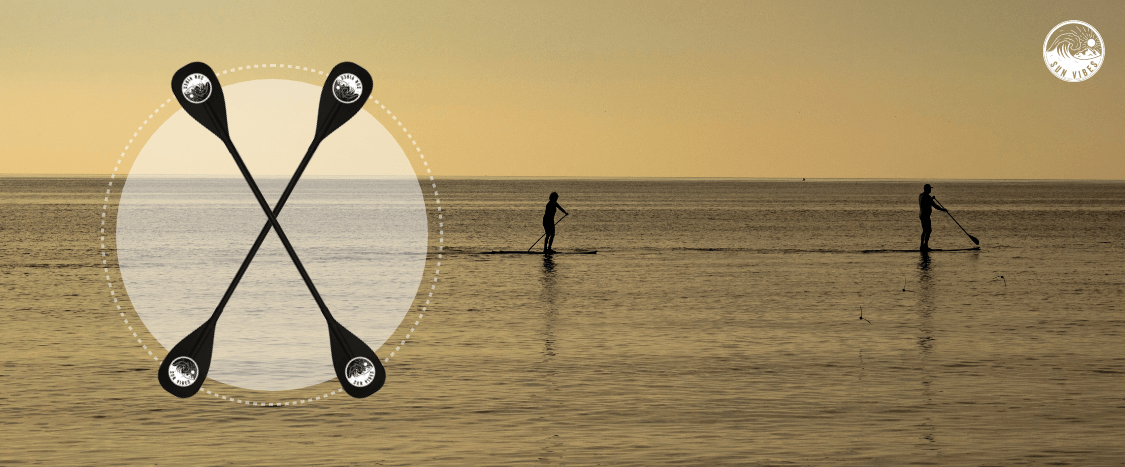
Never venture into the water (rough or calm) without a flotation device.
When you’re not paddling (because you’re swimming or stationary), make sure you keep your paddles attached to the device. Losing a paddle, especially in rough water, can be annoying and even dangerous.
Unless you are stationary and sitting on your board, do not remove your safety cord (leash).
Also, avoid solo trips as much as possible.

